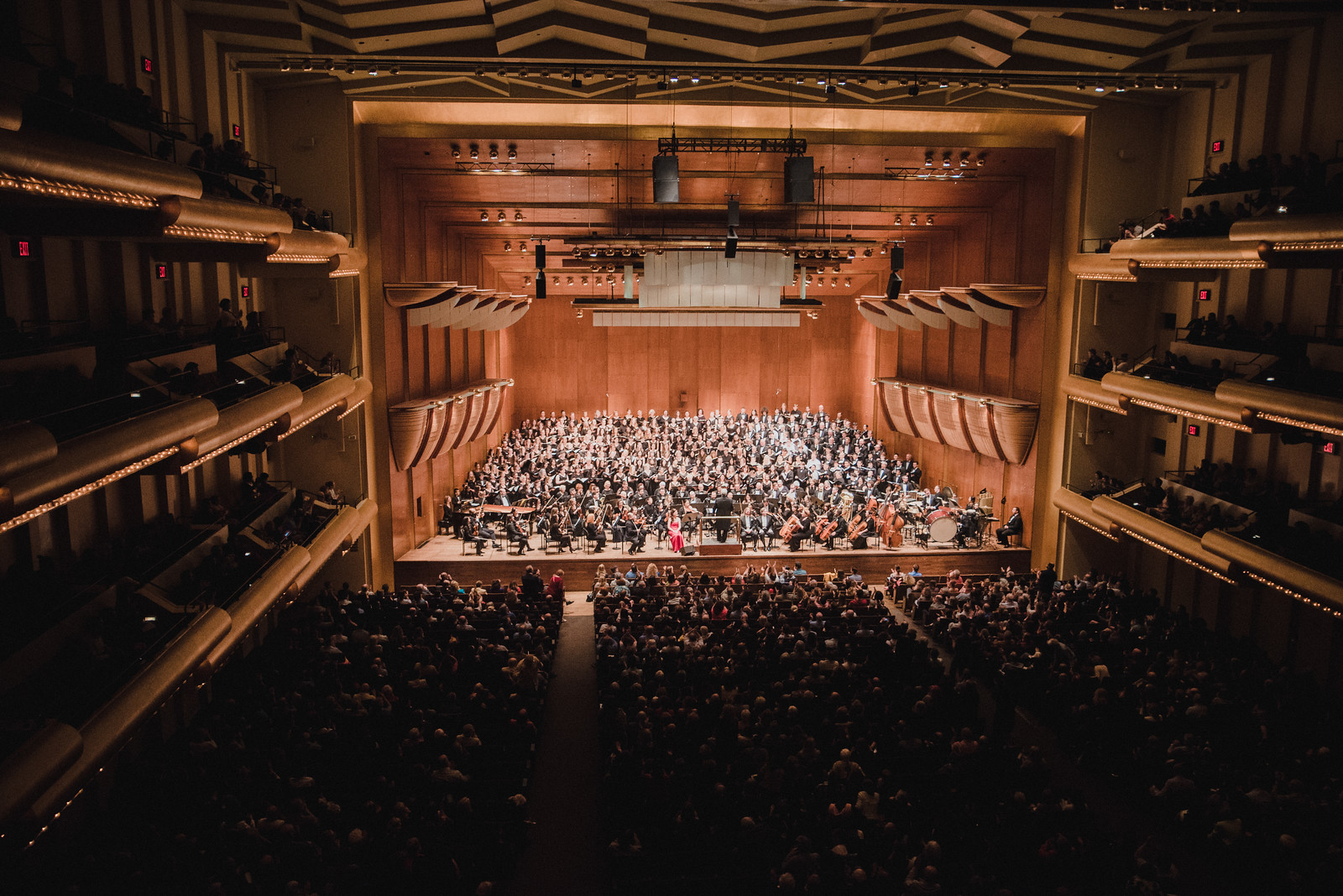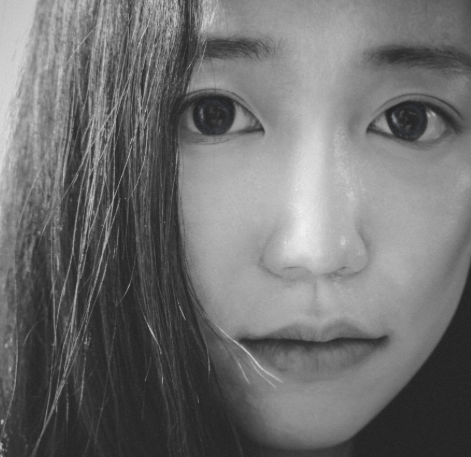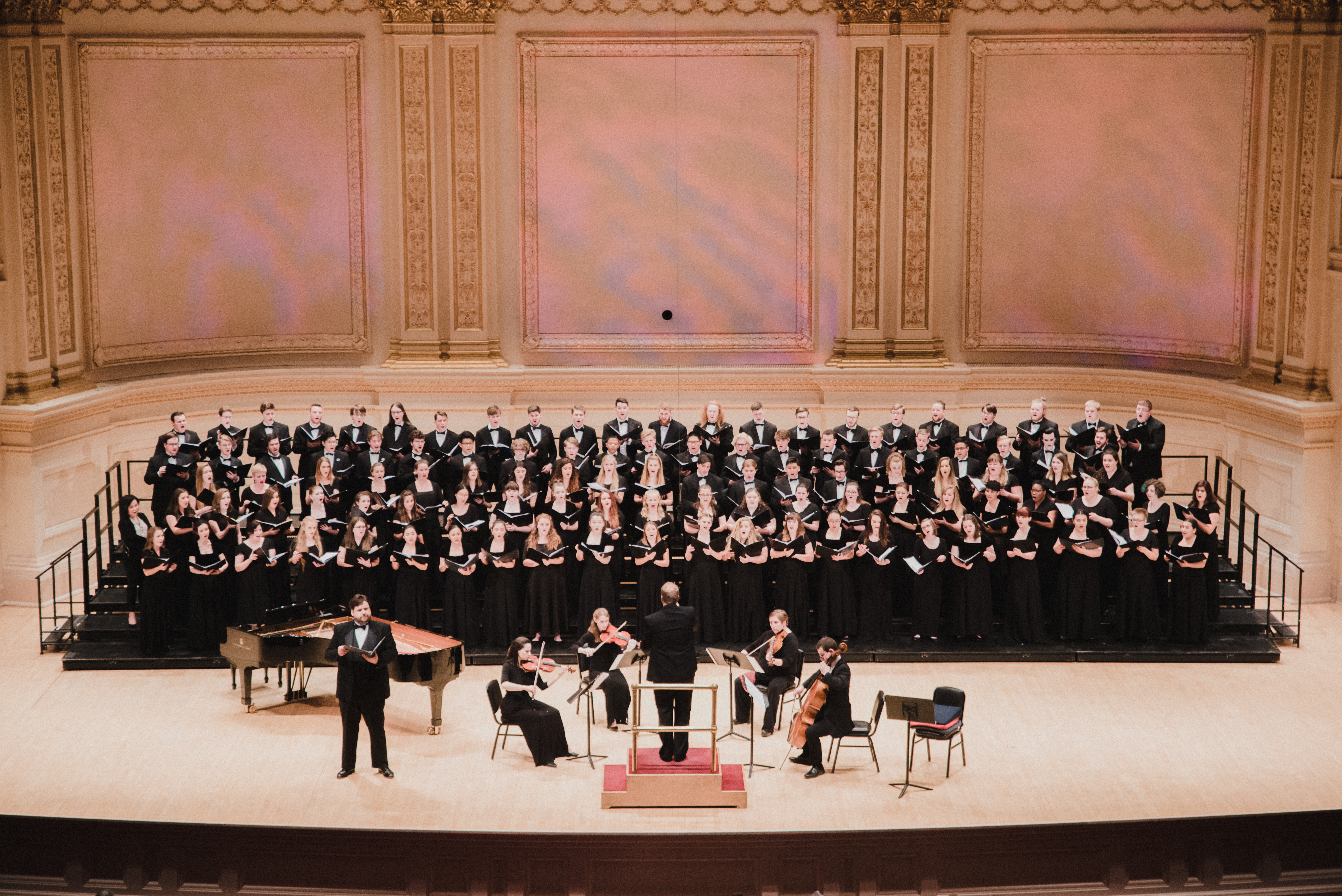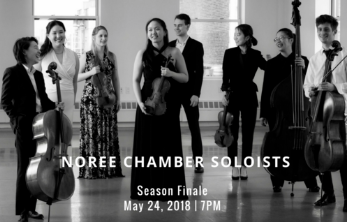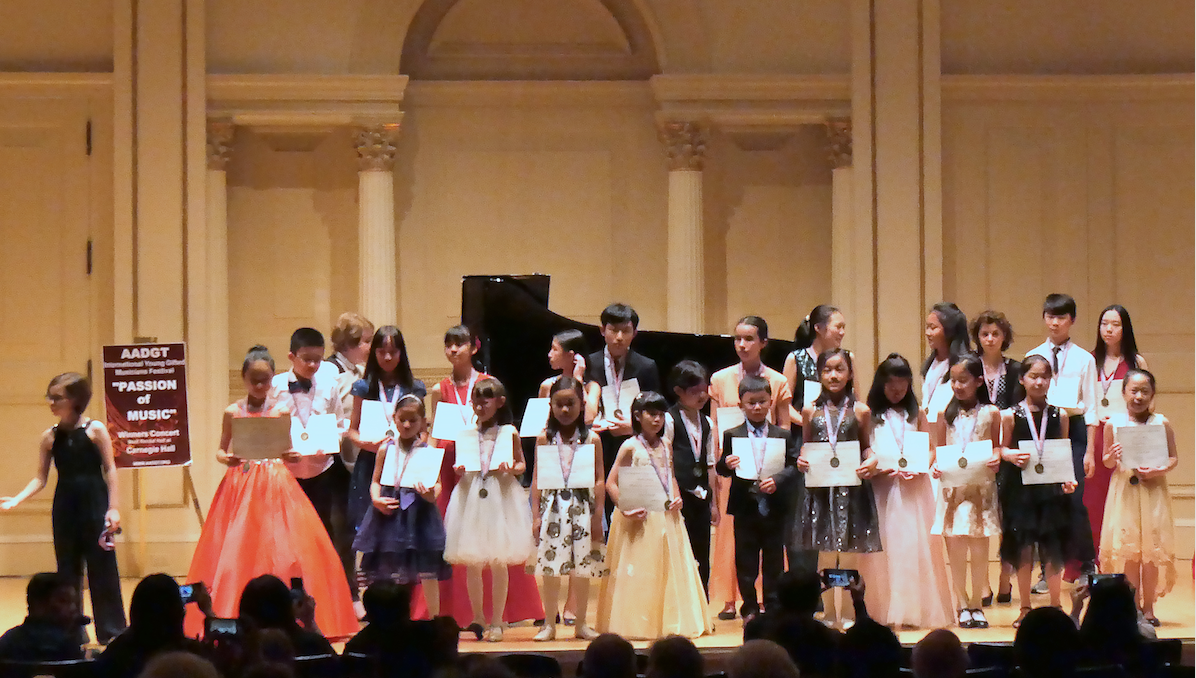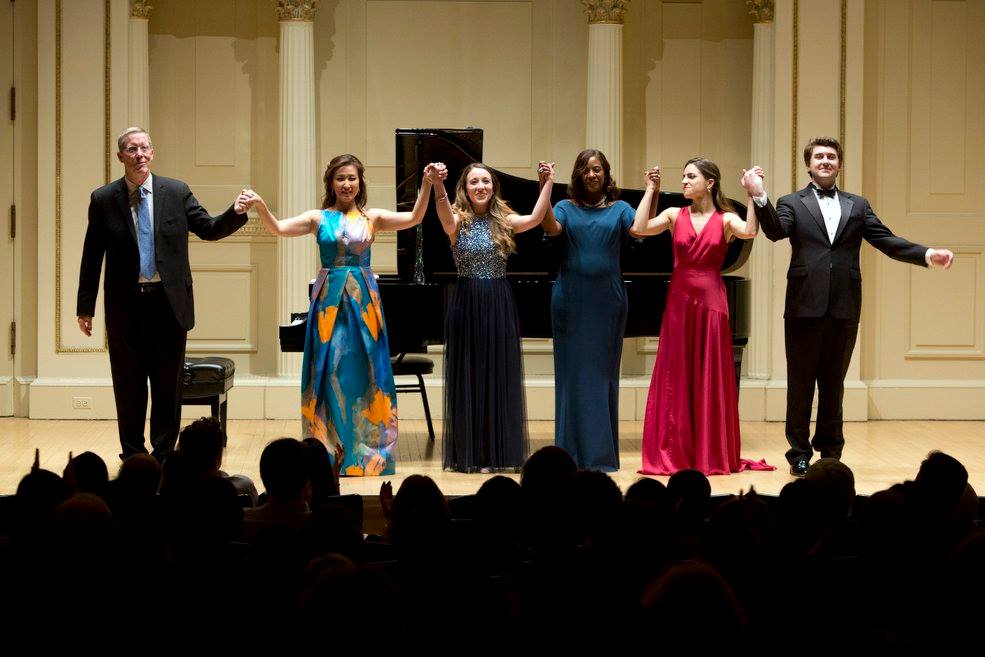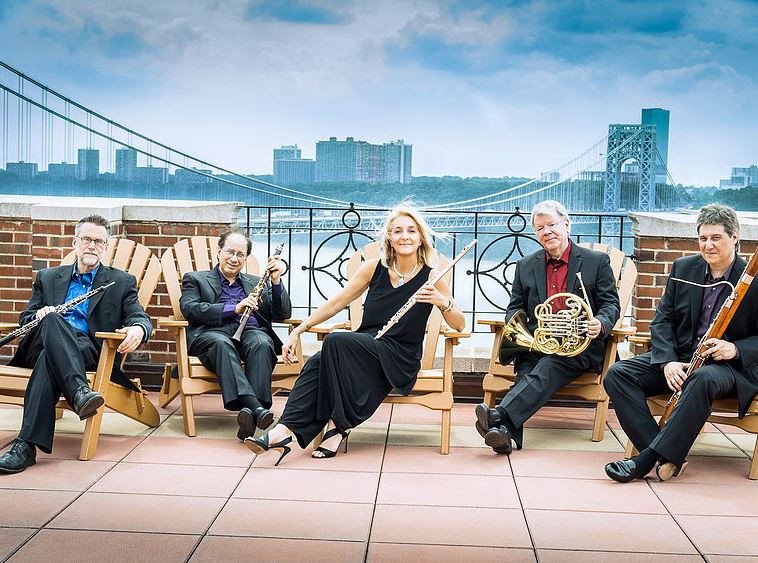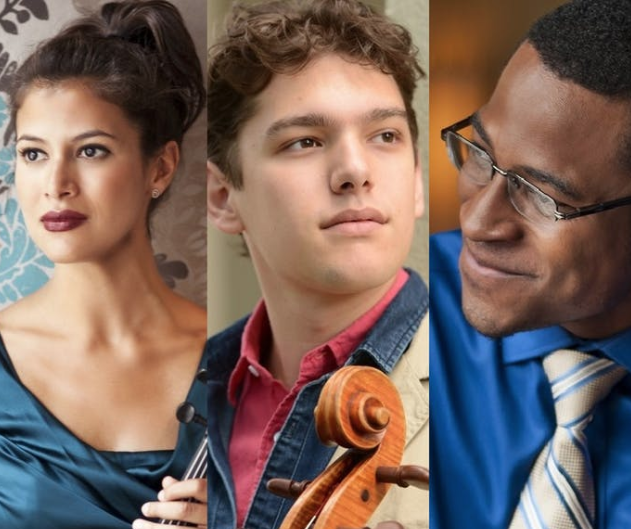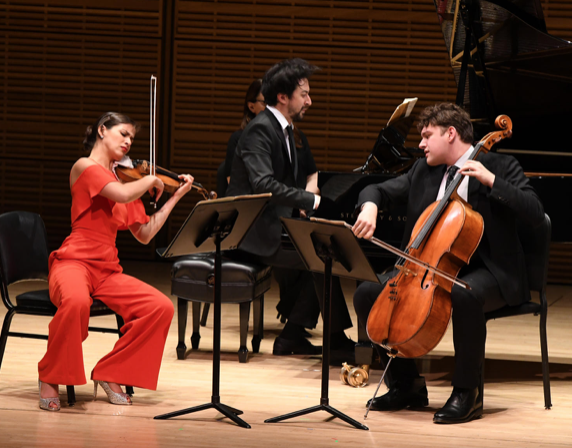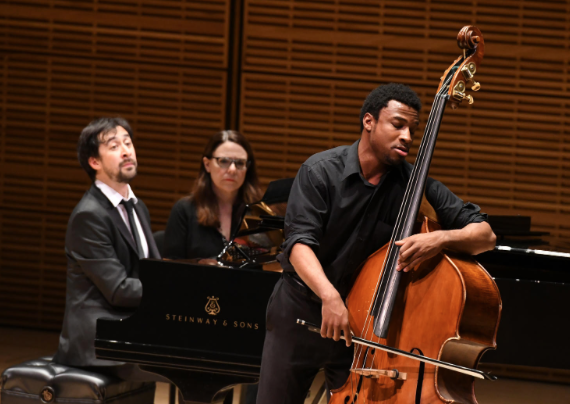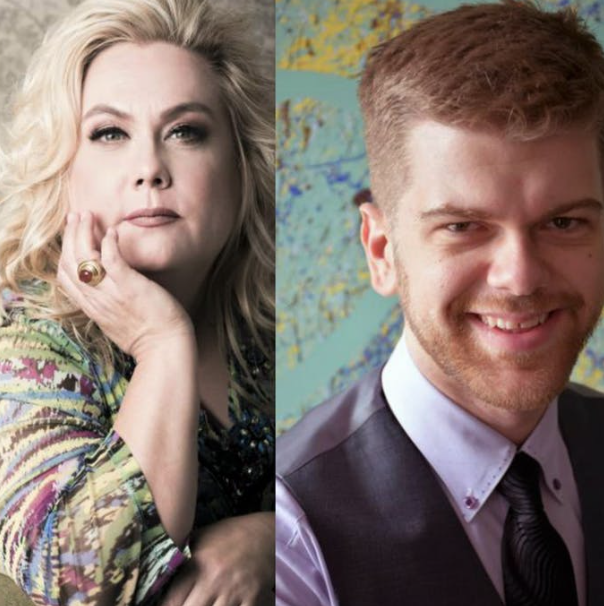Weill Recital Hall at Carnegie Hall, New York, NY
May 13, 2018
Celebrating their 25th anniversary this year, the American Association for the Development of the Gifted and Talented (AADGT) under the direction of founder Elena Rossman has provided vital support to the early careers of some outstanding young musicians. Their most recent concert, fittingly held on Mother’s Day, suggests that their musical nurturing is still going strong.
This reviewer first wrote about AADGT in October, 2006 (when New York Concert Review was still a print periodical). One of their young winners, Aimi Kobayashi had been a mere eleven years old, and I admired her “performances that were stunning for a pianist so young.” She has since won accolades, performed, and recorded (EMI) worldwide, with a new CD/DVD release coming out just this year. Similar stories can be reported about other AADGT winners, counting recognition from competitions and organizations such as the National YoungArts Foundation in 2018 (Max Bobby, Ray Ushikubo), and the Lang Lang Foundation (Anna Larsen, Charlie Liu, Derek Wong, Jasper Heymann), leading conservatories and festivals (Juilliard, Aspen, Curtis) and feature programs such as “The World’s Most Talented Kids” (The Oprah Winfrey Show, 2009), and Arabs Got Talent (2015). Other winners of AADGT’s prize have included Yoav Levanon, Nadia Azzi, Annie Zhou, and Solene Le Van. The AADGT website (www.aadgt.org) also mentions two much more well-known names, Ilya Itin winner of Leeds 1996, and Nobuyuki Tsujii, winner of Van Cliburn, 2009 (though few details are given as to their prizes from AADGT); high praises from Lang Lang, Martha Argerich, and Evgeny Kissin, are among the testimonials.
This year’s concert, not surprisingly, differed greatly from the one I heard in 2006. First of all, this year’s program was in Weill Recital Hall, as opposed to the larger Stern Auditorium – seemingly a wise move for soloists so young. Also, in 2006 there were 6 winners presented, each in substantial sections of the program, while this year there were 32 performers (ages 5-26), some in rather short works. While it was interesting to behold such a large array of young performers (thirty pianists, two violinists), it did make for a program of nearly three hours.
In these days of “safe spaces” for the young, it was good to see the fruits of unrelenting commitment and diligence – and how brave the very young musicians were to perform at such a venue, with Carnegie Hall’s stages being not what one would call “safe” for trial and error performance! The performers were overall quite well-prepared, technically accomplished, and clearly mindful of high artistic standards. This review is not the medium for delving into the playing of every single player – which would be unfair, given the vast disparity of ages and repertoire levels, and the fact that some performers had to wait over two hours to play; that said, some highlights are in order.
The program opened with Evelyn Liu (Age 5-6 Group) playing Tchaikovsky’s Song of the Lark from Children’s Album, Op.39, No. 22, and showing remarkably crisp articulations and digital facility for one so young. She radiated delight upon finishing, and it set lovely tone for the day.
Isabel Liu (age 7-8 Group) followed with excellent renditions of two pieces by William Gillock, Sarabande and Mission Bells. The Sarabande showed an admirable sense of nuance, with lovely pianissimo shading. Mission Bells was sonorous and well-balanced against a gentler accompaniment in the right hand. Dynamics were somewhat exaggerated (approaching fortissimo where marked mezzoforte), but that is generally preferable to a lack of projection, and the playing was always communicative.
In the same age group one heard Vivian Zhang in more Gillock, now the steady rocking of Silver Bells, and Phatsacha Leowattana (Thailand) in Clementi’s Sonatina Op.36 No.1. The Sonatina was well played in all three movements, showing complete focus and maturity. Occasionally one wanted more sound in the right-hand balancing the left, but the slow movement was especially lovely with sensitivity and clarity in the melodic line.
In the age 9-10 category, we heard some surprisingly difficult repertoire, including Chopin’s Impromptu No. 1 in A-flat Op. 29, played very well by Emma Liu and the same composer’s Valse, Op.64 No.2 in the able hands of Phatthicha Leowattana (Thailand). Both players showed a high level of polish and a sense of style which will undoubtedly feel even more natural as they mature. If the two performers with the surname Leowattana are related (one can only guess, but should not assume), they have a built-in two-piano team in the offing!
We also heard in the age 9-10 category Chopin’s Nocturne in E-flat, Op. 9, No. 2, the same Nocturne that we heard in the age 7-8 category. Rather than delve into the comparative merits of the performances (though it is a challenging piece for both age groups, and both fared well), I must express my disagreement with the practice of presenting different performers playing the same piece on the same program – it is trying for audience and performers alike and really should not be necessary if there has been a wide enough selection submitted. The same duplication occurred with two pianists playing Rachmaninoff’s Polichinelle, and though both pianists were impressive for their age groups, this should be a concert and not a competition, so one will refrain from further comment.
Among other minor objections of the day was the omission by one youngster of the A-major octaves in Mozart’s Rondo alla Turca (from Mozart’s Sonata in A major K. 331) probably due to hand size. For such a distinguished venue, I felt that such a piece ought not to be subjected to such shortcuts, as there are many other pieces that could be chosen to be played exactly as written.
Among other programming complaints was the change, from one performer, to Mendelssohn’s Rondo Capriccio instead of the originally programmed work. One’s guess is that there was a Plan A vs. Plan B situation, but such things are a risky proposition. There were various technical challenges unmet, and it simply needed more time, as did several other performers’ works.
In a pleasant break from the typical fare, Gina Park played the third movement Aram Khatchaturian’s Sonatina. It is a demanding movement, with rapid and chromatic fingerwork, and Ms. Park handled its challenges with aplomb.
In the age 11-12 category, Adriel Aguilar played Haydn’s Arietta with Variations with some stylish staccatos, good repeated notes, and a fine sense of Haydn’s humor. Also in this category was Erika Suyama (Japan), playing Chopin’s Bolero, Op. 19. She projected its many moods with sensitivity and played with excellent precision through its rapid passagework, from opening to the brisk polonaise and through to the heroic ending.
Moving to the age 13-14 category, there were several highlights. Stephanie Liao was exceptional in Lowell Liebermann’s Nocturne No. 4, Op. 38, not only for sustaining the hypnotic mood of the opening, but for sustaining the momentum and power building to its thunderous climax. Exceptional as well was Jasper Heymann, playing the third movement of Mendelssohn’s Fantasia, Op. 28. He kept the piece’s character and clarity throughout the fleetest finger-work.
Joanna Wang showed impressive maturity and sensitivity in Chopin’s Nocturne in B-flat minor, Op. 9, No. 1, and Yali Levy Schwartz, showed much technical confidence in the bravura variations of the Paganini-Liszt Etude No. 6 (with just a bit more attention needed for precision in the theme itself).
Elizabeth Tsitron, one of only two violinist winners, added a different timbre in Wieniawski’s Legende and played with a good sense of its Romantic spirit and some deft technique.
Closest to being at a high professional level (in the age 16-18 category) was Kyrie McIntosh whose Prokofiev Sonata No. 3 in A minor had all the ingredients it needs for a powerhouse performance – biting chordal playing, firm grasp of its structure, tonal and emotional variety, and polish. Also excellent was the Brahms Capriccio in G minor (No. 3 from the Fantasien, Op. 116) as played by Chutikan Chaikittiwatana (in the age 18+ category) . Playing after so much demonstrative pianism, her straightforward but genuine musicality was much appreciated in this noble work.
There was so much that was good in the program that it may be best to lump the less good aspects into some brief generalizations. Overall, the awkward context of a group recital does invite the spirit of competition, so there was a tendency among many to exaggerate contrasts, to indulge in unnecessary hand gestures, and to resort to other extra-musical mannerisms – as if to say, “please notice me!” It is unfortunate to subject musicians, or the music, to this need. With just a bit more time between works (and necessarily fewer works) the performers and audience could feel the psychic space to appreciate each work on its own terms, as pieces of music, absolute and incomparable.
A benefit of the above approach might also be less of the all-too-common “on/off” switch mentality about dynamics, in which extreme louds and softs obliterate the middle ground, with crescendos not sustained and climaxes coming prematurely without depth. In any case, one ought not to think of passages as “loud” or “soft” but as the character, emotion, or concept that gave rise to those dynamics – all then starts to make more sense. Even memorization improves! Nerves are inevitable, but greater focus on the messages or meanings behind each work might have helped keep a few performances on course.
All in all, though, Sunday’s concert offered an impressive array of young musicians, including some stars of tomorrow. Congratulations are in order not just to the performers but to their mentors and families. Congratulations are of course in order to AADGT: Cheers to 25 years!
by Rorianne Schrade for New York Concert Review; New York, NY

